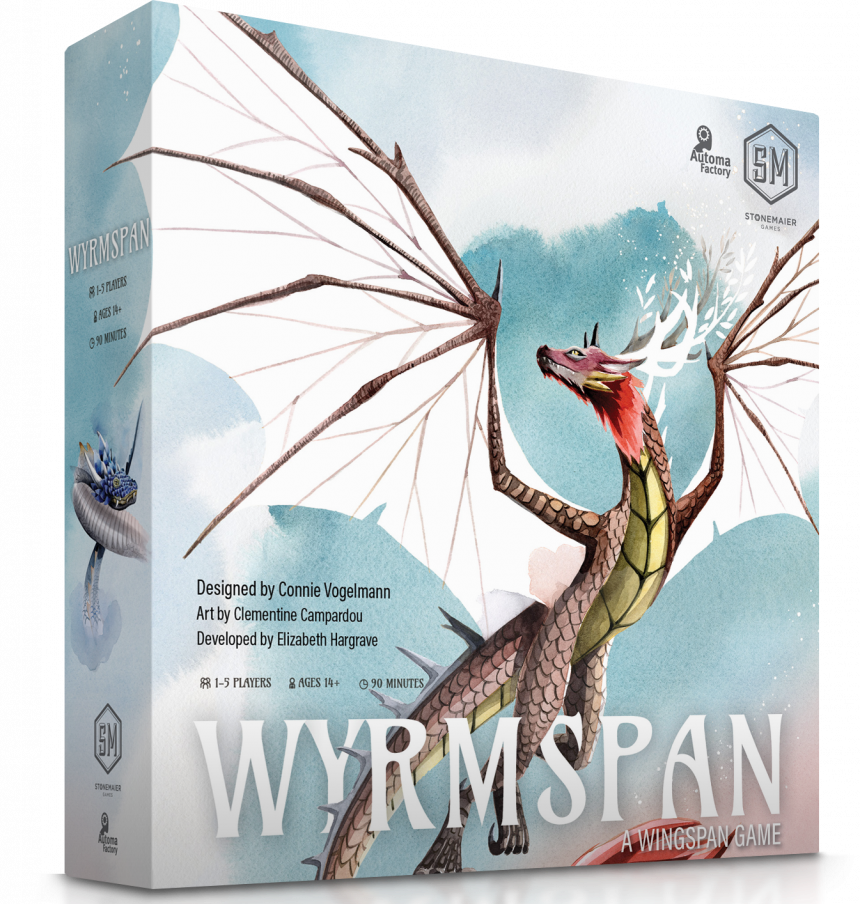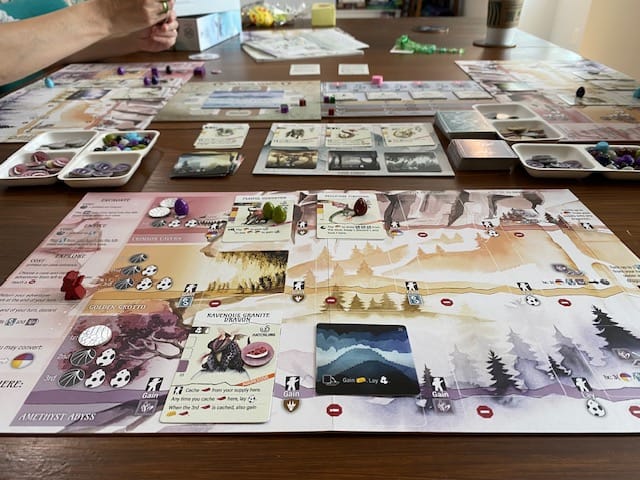
Elizabeth Hargrave’s Wingspan is about as close to a modern classic as it gets, resembling the breakout hits of the 1990s in its uncommonly wide appeal. Not only did it appear in chain bookstores and retailers, but it also became an object of comedy when a red-faced Mandy Patinkin howled and cursed at his failure to understand its rules. ‘This is just nonsense!’ he roared. ‘This is an IQ test!’ Tabletop publishers the industry over would kill for that sort of publicity.
Given its popularity, it wasn’t a stretch that Stonemaier Games would release a follow-up. What caught everybody by surprise, however, is that the design had been handed off to a relative rookie. Rather than tasking Hargrave with authoring another breakout hit, Stonemaier selected Connie Vogelmann, a Washington, D.C.-based developer for the task. In quick succession, the publisher released two of Vogelmann’s titles: Apiary, about spacefaring bees competing to construct the most efficient hive, and Wyrmspan — Wingspan with dragons.
Like that earlier hit, Wyrmspan is all about raising winged creatures. Nearly everything about that original title has been faithfully reproduced. Players once again build a tableau consisting of three rows of creatures, each chowing down on various resources before they’ll join your menagerie. As before, every card is wholly unique, gorgeously illustrated by a cast of artists and endowed with individual traits. One dragon might jealously tend a hoard of gold, while another snatches eggs from its kin in neighboring caverns. Hatchlings, the cutest of the bunch, require a steady diet of milk or meat before maturing into some of the most potent cards in the game. Every dragon has a temperament — playful, shy, aggressive — alongside other traits such as its size, its preferred resources, and whether it shelters eggs. Players largely tend to their own dragons, keeping out of one another’s hair, but every round offers a new contest that doles out points for whomever fosters the most of a given category.
If that sounds quite a bit like Wingspan, that’s intentional. This is, after all, meant to appeal to fans of the original game. But what makes Wyrmspan formidable is found in how it departs from its source material — leaving the nest and taking flight all on its own.

Of the two games, this is the more complex option. Even the simple act of sheltering your dragons is more involved. Rather than simply arranging your creatures across three ill-defined rows, Wyrmspan pitches its tableau as the tiers of a sprawling cavern network. Before a dragon can be housed, the caverns must be properly excavated. This adds a new layer to the proceedings, cavern cards, which require additional thought but award the resources one has dredged from the rubble.
Once housed, your dragons now occupy a physical space within the game world. As in Wingspan, much of the strategy revolves around when to activate those three rows. But this time around, these activations are portrayed as adventures in miniature, with a meeple representing your dragon tamer traveling from left to right through their caverns to glean resources and visit each dragon in turn. Although the setting is fictional in a way that Wingpsan’s aviaries were not, these visits feel more tangible, giving each creature its own personality and a genuine place within your collection. Wyrmspan is a mathematical game, hinging on resource optimization and build orders, so it’s a pleasant surprise to discover that its dragons feel grounded and present. It’s hard not to feel at least a little bit connected to your pets.
But also: Here be dragons. Wyrmspan delights possibility. As a follow-up, it requires a defter touch than its parent. But it’s also more imaginative, more playful, more appealing to ten-year-olds and adults who haven’t yet lost the sparkle in their eyes. Far from being a cynical cash-grab, Connie Vogelmann and Stonemaier Games have produced a title that’s worthy of real consideration.
Developer: Connie Vogelmann
Artist: Clémentine Campardou
Published by Stonemeier Games
This feature originally appeared in Wyrd Science Vol.1, Issue 6 (August '24)

